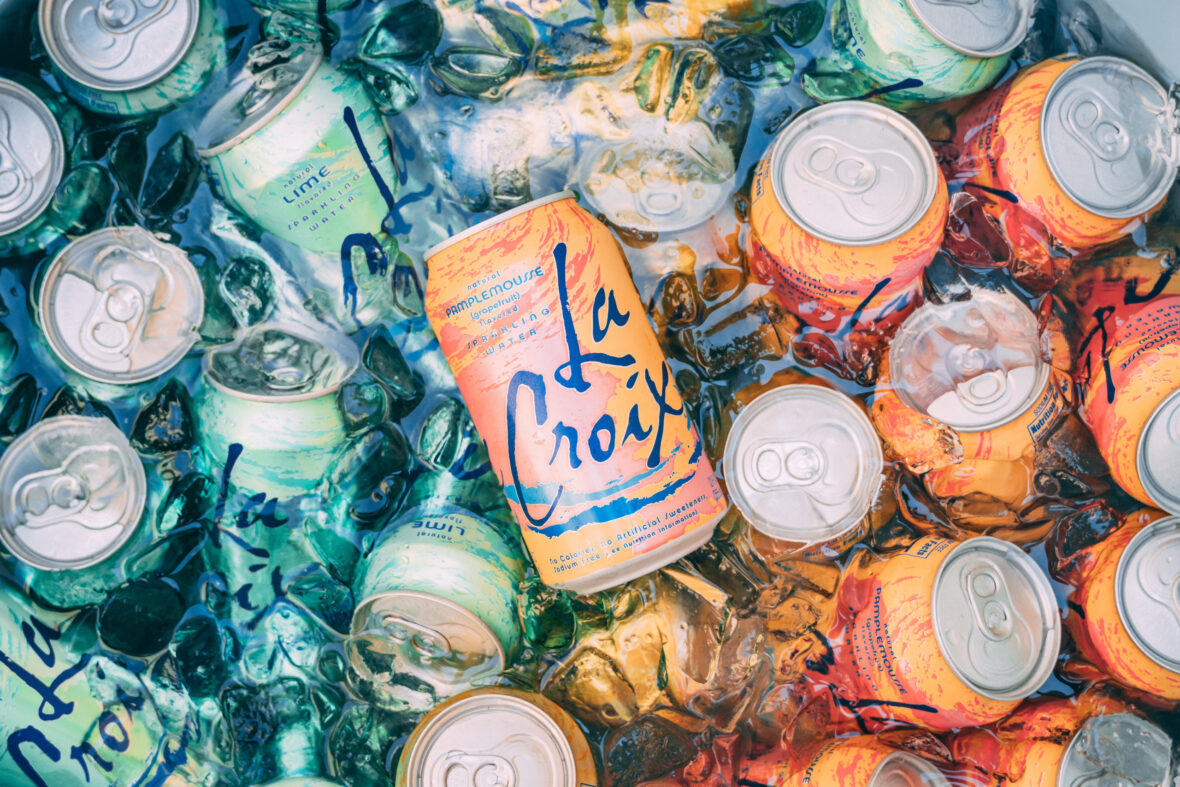
On July 24, 2024, the scientific journal Environmental Health Perspectives published a groundbreaking study on PFAS chemicals in pesticides — and trust us, you’re going to want to know about this one.
The New Groundbreaking Study
The authors of this study carefully examined public records from the U.S. and Canada to track the use of pesticides containing these dangerous chemicals. Unfortunately, the study found that these PFAS-contaminated pesticides are used throughout the country on staple crops like corn, strawberries, kale, and more.
The peer-reviewed paper, titled “Forever Pesticides: A Growing Source of PFAS Contamination in the Environment,” was a collaborative effort with multiple organizations, including the Environmental Working Group (EWG), the Center for Biological Diversity (CBD), and Public Employees for Environmental Responsibility (PEER).
The authors confirmed that these chemicals are hurting the environment and can have some serious negative effects on your health. The study should serve as an urgent wake-up call for the Environmental Protection Agency (EPA) to tighten up pesticide manufacturing regulations to protect people and the planet.
Want to stay up to date with the latest health and wellness news? Sign up for the newsletter for more well-researched, non-toxic living guidance and smart wellness advice.
What Are PFAS Chemicals, and Why Do They Matter?
PFAS stands for per- and polyfluoroalkyl substances.
This group of synthetic substances is over 15,000 strong, and scientists like to refer to them as “forever chemicals.” That’s because they don’t break down in soil and water, and can even collect in human blood and organs, where they can do lasting damage.
You may have heard of PFAS in the context of cookware — these chemicals are commonly found in plastic-coated nonstick pots and pans (and if you want to avoid ingesting PFAS chemicals, our list of the 7 best non-toxic cookware options and this chef-approved non-toxic bakeware guide are great places to start!). The presence of PFAS in pesticides poses a new concern, however, as it highlights that these chemicals might already be present in our dinner before it ever hits the pan.
This new study reveals that pesticide manufacturers are increasingly using PFAS chemicals to make their products more stable and effective, but not without a cost.
Nathan Donley, Environmental Health Science Director at the CBD, explains, “Lacing pesticides with forever chemicals is likely burdening the next generation with more chronic diseases and impossible cleanup responsibilities.”
What’s more, the recent research1 published in Environmental Health Perspectives highlights that forever chemicals make up a concerning 14 percent of the active ingredients in American pesticides.
The Research on PFAS in Pesticides
The authors behind “Forever Pesticides: A Growing Source of PFAS Contamination in the Environment” are subject matter experts Nathan Donley, Caroline Cox, Kyla Bennett, Alexis M. Temkin, David Q. Andrews, and Olga V. Naidenko.
Lacing pesticides with forever chemicals is likely burdening the next generation with more chronic diseases and impossible cleanup responsibilities.
Nathan Donley, Environmental Health Science Director, CBD
These researchers made some alarming discoveries that add a new sense of urgency to the fight against PFAS. Here’s what we now know:
PFOA and PFOS Found in Pesticides
PFOA, or perfluorooctanoic acid, is a type of PFAS compound that is considered one of the worst for human health and the environment. The International Agency for Research on Cancer has gone as far as to classify PFOA as “possibly carcinogenic to humans2.”
PFOS (perfluorooctane sulfonate) is another forever chemical that’s considered one of the most concerning contaminants. Epidemiological studies have shown a strong association between both PFOA and PFOS and testicular and kidney cancer, although conclusive results will require longer-term follow-up studies.3.
Unfortunately, both PFOA and PFOS have been found in some pesticide products, which Donley states are “some of the most widely dispersed pollutants in the world.”

What Are PFAS Chemicals Doing in Pesticides, Anyway?
Researchers believe that PFAS chemicals are leaching from pesticide containers treated with fluorine. Pesticide manufacturers fluorinate plastic containers to make them safer to use, but the fluorine also produces PFOA and PFOS as chemical byproducts. The pesticide products then become contaminated in the containers before they eventually make their way into household items like staple produce, flea treatment for pets, and insect-killing sprays.
Water Pollution From PFAS in Pesticides
Once PFAS-contaminated products have been used on farms, the pesticide runoff can damage downstream water sources and contaminate drinking supplies4.
Researchers confirmed that these toxic chemicals are present in bodies of water across the country — of the 13 of the 66 PFAS active ingredients approved for use in pesticides in the US, 12 have been found in American streams and rivers5. Because these chemicals are so difficult to break down, they’re a long-term threat to our water supply. (You can read up on the devastating effects of PFAs in our waterways here.)

Why Has the EPA Neglected PFAS in Pesticides?
PEER Science Policy Director Kyla Bennett says, “The blame for this contamination crisis lies squarely on the EPA’s shoulders.”
However, while the EPA is certainly responsible, researchers tell us that the agency isn’t equipped to deal with the risks posed by PFAS in pesticides. The recent study concluded that the EPA continues to underestimate the impact and risks of PFAS. Until pesticide regulators take these risks seriously, they are likely to continue making the same mistakes.
How Does The Presence of PFAS in Pesticides Affect Us?
At this point, it’s probably pretty clear that finding PFAS in pesticides has been a concerning discovery for the scientific community. But how will this discovery directly affect our lives?
The Impact PFAS in Pesticides Has on Our Health
What does the use of PFAS in pesticides mean for our health?
Research links PFAS exposure to multiple forms of cancer6, which is just one of the many concerns with the use of contaiminated pesticides on crops. In addition, studies have established a connection between forever chemicals and female reproductive issues7. That’s not all, though — PFAS in pesticides may also impact the onset of puberty8 and even reduce a person’s ability to fight off infections9. One study even found a clear link between PFAS exposure and a slow metabolism.
Needless to say, it’s worth doing everything we can to minimize PFAS exposure.
The Impact PFAS in Pesticides Has on The Planet
PFAS chemicals leak into soil, pollute water, and even spread through the air. Air pollution from these chemicals is a major source of concern — PFAS contamination has been found in both indoor and outdoor air10. Forever chemicals can be carried by the wind for miles after they’re sprayed on crops, lowering the quality of the air we breathe as they travel.
In addition, as these chemicals accumulate in soil, water, and the bodies of living things, they can dramatically reduce the planet’s biodiversity. Forever chemicals have even been found to raise the levels of steroids in the brains of some animals, including polar bears11, which can damage their reproductive health.
Kyla Bennett said it best: “I can think of no better way to poison people and the environment than to spray PFAS-laden pesticides on our crops and in our homes.”
Stopping the Spread of PFAS Through Pesticides
The authors behind the recent study in Environmental Health Perspectives offered practical steps that U.S. regulators can take to tighten their grip on the use of PFAS in pesticides. The researchers’ recommendations included changing the standards for pesticide ingredient labeling, requiring immunotoxicity tests for any PFAS ingredients, and expanding environmental monitoring efforts.
What You Can Do to Avoid PFAS in Pesticides
At this point, there isn’t a reliable way to avoid PFAS chemicals altogether — these substances are in the air we breathe, the water used on our crops, and the soil those crops grow in. However, eating organic produce is one helpful step you can take to reduce your exposure to PFAS through food.
“I can think of no better way to poison people and the environment than to spray PFAS-laden pesticides on our crops and in our homes.”
Kyla Bennett, Science Policy Director, PEER

Filtering your water is another key step in the right direction. Since forever chemicals can seep into water and cause long-lasting contamination, a high-quality filtration system is a worthwhile investment for your health. Look for filters containing activated carbon or reverse osmosis membranes for the best PFAS filtration12 — your standard Brita might not cut it in this context13.
The Bottom Line on PFAS in Pesticides
In conclusion, PFAS threaten our health and our planet, and we now know that they’re used on crops across the country. The recent research on the impact of these chemicals confirms that it’s time for regulators to take the risks seriously and take steps to stop PFAS from causing more damage.
Read More on Organic Authority

Sources:
- https://ewg.us9.list-manage.com/track/click?u=12ed683c058e7d5e11688e294&id=7e19f2a8b4&e=04e48c2deb
- https://monographs.iarc.who.int/list-of-classifications/
- https://www.nature.com/articles/s41545-023-00274-6
- https://www.ewg.org/interactive-maps/pfas_contamination/map/
- https://www.ewg.org/news-insights/news-release/2024/07/new-study-finds-alarming-rise-persistent-forever-chemicals
- https://dceg.cancer.gov/research/what-we-study/pfas
- https://www.ncbi.nlm.nih.gov/pmc/articles/PMC8743032/
- https://www.ncbi.nlm.nih.gov/pmc/articles/PMC8458955/
- https://www.atsdr.cdc.gov/pfas/health-effects/index.html
- https://pubs.acs.org/doi/10.1021/acs.estlett.1c00481
- https://news.mongabay.com/2023/09/pfas-forever-chemicals-harming-wildlife-the-world-over-study/
- https://www.health.state.mn.us/communities/environment/hazardous/topics/pfashometreat.html
- https://www.fastcompany.com/90921169/these-are-the-best-filters-to-get-pfas-out-of-your-drinking-water

